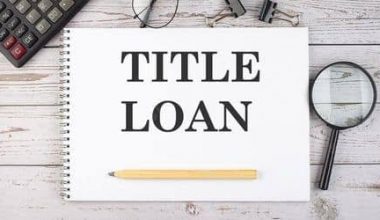A balloon payment is a lump sum paid at the end of a loan’s term, significantly more than all previous payments. Borrowers with balloon loans can make lower payments at the start of a loan in exchange for a larger (balloon) payment at the end of the loan’s term. These loans are generally better for borrowers with good credit and a high income.
But is there a catch? Let’s find out…
What is a Balloon Payment?
A balloon payment is the final amount owed on a loan that is structured as a series of small monthly payments followed by a single large sum at the end of the loan term. The early payments could be all or almost all of the loan’s interest payments, with the balloon payment being the loan’s principal. This is referred to as a balloon loan.
The balloon mortgage loan became popular in the years leading up to the 2007-2008 financial crisis. It enabled people who wanted to buy a home to get a mortgage payment they could afford, at least initially.
The financial crisis did not eliminate the balloon loan, but it is now more commonly used for business loans. A project can be financed with a loan that requires minimal payments early on, with the balloon payment due only when the project generates a profit.
A balloon payment is analogous to a bullet repayment.
Understanding Balloon Payments
As the term “balloon” implies, the final payment on this type of loan is substantial.
Balloon payments have become more common in commercial than consumer lending in recent years. It enables a commercial lender to reduce short-term costs while covering the balloon payment with future earnings.
Individual homebuyers use the same logic, but the risks are more significant. Homebuyers keep their short-term costs low by assuming that their incomes will be significantly higher when the balloon payment is due, that they will be able to refinance their mortgage before it is due, or that they will be able to sell the house and pay off the entire mortgage before the balloon payment is due.
During the 2008-2009 financial crisis, homeowners who used balloon mortgages to finance their purchases found it impossible to sell their homes at a high price to repay the borrowed amount.
Balloon payments are frequently bundled into two-step mortgages. A borrower receives an introductory and often lower interest rate in this financing structure at the start of their loan. After an initial borrowing period, the loan switches to a higher interest rate.
ARM vs. Balloon Loan
An adjustable-rate mortgage (ARM) is frequently confused with a balloon loan. An ARM provides the borrower with an introductory rate for a set period, typically one to five years. The interest rate resets then and may reset regularly until the loan is fully repaid.
The incentive is a meager initial interest rate compared to a fixed-rate mortgage rate. The disadvantage is the possibility of a significantly higher rate in the future.
Unlike balloon loans, an ARM adjusts automatically.
Examples of Balloon Payments
Balloon payments are most commonly associated with the following loan types, though these products may differ from their traditional counterparts.
Mortgages
Balloon mortgages enable qualified homebuyers to finance their homes with initially low monthly mortgage payments.
The interest-only home loan is a typical example of a balloon mortgage, as it allows homeowners to postpone paying down the principal for three to ten years and instead make only interest payments.
Interest-only and other balloon mortgages are typically used by high-net-worth homebuyers with good credit and enough capital to pay down a large principal on a regular amortization schedule.
However, most balloon mortgage borrowers do not make the balloon payment when the low payment period expires. Instead, to avoid paying the large lump sum in cash, it is common to refinance or sell the house first.
Business Loans
Businesses often use balloon loans to meet short-term financing needs or to purchase commercial real estate.
A balloon loan can be an affordable way to provide gap financing for a business that needs working capital and is awaiting a large payment from a customer. Balloon loans can also be helpful for companies that want to move into a new office before selling the old one because the deferred payment schedule gives them time to sell the old one.
Businesses face the same risks as consumers when it comes to balloon loans. Taking on a liability that requires a large lump sum payment can be risky for a business that does not have a guaranteed income stream.
Although refinancing is an option for getting out of a balloon loan, there is no guarantee that you will be granted a new loan. If your revenue falls or your industry suffers, there’s a good chance you’ll be saddled with a large outstanding debt.
Car Loans
Balloon payments are less common in auto loans than in mortgages or business loans. However, lending restrictions in the auto loan industry are less stringent, making it easier for consumers to obtain this type of loan.
Many borrowers enter into balloon car loans believing that their income will increase by the time the payment is due, leaving them unable to pay down the lump sum.
While balloon car loans can help consumers secure lower monthly payments, they are frequently used for the wrong reasons.
It’s important to remember that balloon loans aren’t necessarily more affordable; they spread out the total cost differently. If there is no guarantee that your income will increase significantly, you should choose a loan you can fully finance on your current income.
Fully Amortized Loan vs. Balloon Loan
A balloon loan consists of a series of consistent payments followed by a large payment at the end, known as the balloon payment. On the other hand, a fully amortized loan is made up of equal payments made over the life of the loan. In this case, the balance at the end of the costs is zero.
The regular payments in a balloon loan structure are lower than those in a fully amortized loan for a similar-sized loan. It is the primary advantage of balloon loans.

Where:
CP = Constant Payment.
BP = Balloon payment.
N = number of payments.
r = discount rate.

Where:
CP = Constant Payment.
N = number of payments.
r = discount rate.
Application for a Balloon Loan
The balloon loan can be an effective financial management tool. Consider a small business that wants to create a new product. The development will require an investment and will not generate cash flows in the first few years. In this case, using a balloon loan will reduce the financial burden of the business during the development phase because the initial payments are lower.
As the business matures and grows, it will be able to generate sufficient cash flows to service the balloon payment at the end of the loan. It also aids in financial planning because payments can be adjusted to reflect the company’s financial situation.
When Exactly Is the Balloon Payment Due?
A balloon mortgage loan payment is typically due on the maturity date when the mortgage becomes entirely due. In the case of a five-year balloon mortgage, for example, a balloon payment is due at the end of the five-year term and pays off the remaining loan balance. The exact due date of a balloon payment is determined by the loan terms and is set at the start of the balloon mortgage.
What Distinguishes a Balloon Loan From Other Types of Loans?
Balloon mortgages differ from other loan types in a few ways, in addition to having a lump-sum payment due at the end of the loan.
Loan Providers
One significant distinction is the type of lenders who provide balloon loans. A balloon payment is one of several features that are not permitted in most qualified mortgages, which are loans that meet established guidelines and are considered stable. As a result, balloon payments are only allowed in some mortgage products and are only available from small or private lenders or for specific types of lending, such as construction.
Qualification Standards
Eligibility requirements and the underwriting process for balloon mortgages may also differ. Because balloon notes are not considered qualified mortgages, lenders who offer them set their needs. Non-qualified mortgages, including balloon notes, typically have more stringent borrower requirements, such as higher credit scores and down payment amounts.
Rates of Interest
The interest rates on balloon mortgages are another way they differ from other loans. Because lenders take on a lot of risks, balloon mortgage rates are usually higher.
Pros & Cons of Balloon Payments
Pros
- You will make small initial payments. Monthly payments during the fixed period are typically lower than those of a fully amortized loan, mainly if the balloon mortgage is interest-only.
- You can purchase a home sooner. Buyers who anticipate a significant increase in income or a lump-sum payment in the future can use a balloon mortgage to buy a home sooner rather than later.
- You might have a quicker processing time. Many balloon note lenders offer a much shorter underwriting process than other loan types.
- Investment renovations can be financed. Buyers can complete the construction project while making low monthly payments with fix-and-flip loans (which have balloon payment features). However, as a borrower, you must exercise caution with these loans. They frequently come with exorbitant interest rates and fees.
- There will be fewer documentation requirements. A balloon mortgage may not require a home appraisal or other documentation typical of traditional financing, depending on the loan terms and the lender.
Cons
- You might lose your house. A balloon mortgage is risky unless you are sure you will have enough money to pay off the loan. If you fail to pay the balloon, your lender can foreclose on your home.
- You might need to borrow more money. If you can’t make the balloon payment when it’s due, you may have to take out another loan to cover it.
- You’ll accumulate equity more slowly. The monthly mortgage payments preceding the final balloon payment do not pay off much principal with balloon payment amortization — in the case of interest-only loans, none at all. As a result, balloon payment loans generate little to no home equity and can be challenging to refinance.
- You may need help qualifying. Balloon mortgage lenders may require a high credit score or a large down payment.
- Interest rates will be higher. Because of the risk involved, balloon mortgage rates are frequently higher than qualified ones. Standard loan options, such as traditional conventional mortgages, FHA, VA, and USDA loans, typically offer better rates to consumers.
How to Get Rid of a Mortgage with a Balloon Payment
- Refinance the balloon loan. A balloon payment can be avoided by refinancing the loan to another mortgage before the balloon payment is due.
- Make the balloon payment. Naturally, making the balloon payment will result in the cancellation of the balloon note. Saving up the lump sum during the fixed payment period, using expected funds, or borrowing the money to make the balloon payment are all options.
- Sell the house. Borrowers who cannot pay balloon payments by the due date can sell the property to avoid a loan default.
- Pay more during the first period. Assuming there is no prepayment penalty on the loan, paying more during the initial period reduces the principal due at the end of the loan term.
- Negotiate a time extension. An extension may be possible if a homeowner cannot make the balloon payment on time. However, this option is likely costly and may result in only a short-term extension.
Important Connections
Payment Regularly
The size of regular payments and balloon payments have a linear relationship. The balloon payment decreases linearly as the periodic payments increase.
When the balloon payment is zero, the regular amount equals the regular price of an identical fully amortized loan. As a result, a fully amortized loan is a subset of a balloon loan in which the balloon payment is zero.
Rate of Interest
The interest rate and balloon payment have a non-linear relationship. As the loan’s interest rate rises, the balloon payments may become very large. It is significant because, as interest rates rise, the reduction in balloon payments necessitates increasingly higher regular prices, which may impact the company’s financial management.
Alternatives to Balloon Mortgages
If a balloon mortgage isn’t right for you, here are other options.
Construction-to-Permanent Loans
People who wanted to finance a newly constructed home had to obtain interim construction financing from a bank in the past. However, lenders can now make one-time construction loans.
During the construction phase, these loans are typically interest-only loans that convert to mortgages with principal and interest payments once the construction phase is completed. This option may be a better bet than a loan with a balloon payment.
Adjustable-Rate Mortgages
A balloon loan can provide some of the same benefits as an adjustable-rate mortgage (ARM) but with different risks. ARMs typically have lower interest rates and monthly payments at the start of the loan. Homebuyers can usually qualify for a larger mortgage when purchasing a home for the first time.
Unlike balloon loans, however, the entire balance of an ARM does not become due all at once. Instead, after an initial fixed period, the interest rate and payments adjust throughout the loan term.
You can ask your lender to estimate the highest payment you might face under the ARM to determine whether the initial savings are worth the risk.
FHA Graduated Payment Mortgage
Homebuyers who use a Federal Housing Administration (FHA)-backed graduated payment mortgage will see their payments rise over time. These loans are ideal for people who want to buy a house immediately but cannot afford the monthly payments. Because it has built-in features that help ensure borrowers can afford the new fees as they increase, the loan program is a safe alternative to balloon mortgages.
Mortgage for a More Extended Period of Time
A mortgage with a longer term, such as 40 years, will have a lower payment than a loan with a shorter amortization period. As a result, this may be a more stable option than a balloon loan. However, because you will be making payments over a more extended period, you may pay more interest over the life of the loan. Furthermore, interest rates are typically higher than on loans with shorter terms.
Is It Legal to Accept a Balloon Payment?
A balloon payment is, indeed, a legal debt instrument. A lender can design a loan for a borrower who wants to pay a series of low monthly payments followed by a single large principal payment at the end of the loan.
The borrower must be aware of the long-term obligation of paying off the principal balance at the end of the loan all at once.
Are Balloon Payments a Good Idea for Buying a Car?
A balloon payment may be appropriate for borrowers in desperate need of a car but cannot afford a large monthly payment.
In such cases, the borrower will almost certainly pay a higher interest rate than would be charged on a traditional car loan.
Most importantly, the borrower must keep an eye on and be prepared to pay the looming balloon payment at the end of the loan term.
Conclusion
Balloon payments are relatively common in business transactions. They reduce financing costs during the early stages of a new project and give the company time to realize profits from the venture before paying off the loan’s balance.
They are available to consumers but usually only to those with a sizable down payment and a good credit score.
The balloon payment carries additional risks when used for a home mortgage. The buyer pays mostly or only interest for several years, counting on price growth to provide equity.
Borrowers believe they can refinance their mortgage or sell their home for a profit before the balloon payment is due. That strategy may only succeed if the housing market experiences an unexpected downturn and their home gains value.
Related Articles
- Mortgage: Simple 2023 Guide for Beginners and all you need Updated!!!
- PERSONAL LINE OF CREDIT (PLOC): Definition, Pros, Cons & Best Options
- BEST EMAIL MARKETING FOR SMALL BUSINESS: Top 19 Picks (+ Detailed Guide)
- MORTGAGE BALLOON PAYMENT: Understanding How It Works
- WHAT IS A BALLOON PAYMENT: Definition And How To Avoid It






